Uh oh! I just stole Thibaut Pinot's KOM: how to use maths, mates and modifications to beat a WorldTour hitter
How nerdiness plus a little help from his friends turned a fourth-cat donkey into a WorldTour-level mountain goat... We went after Thibaut Pinot's Strava KOM on a 17km Alpine climb to see if we could knock him off the top spot
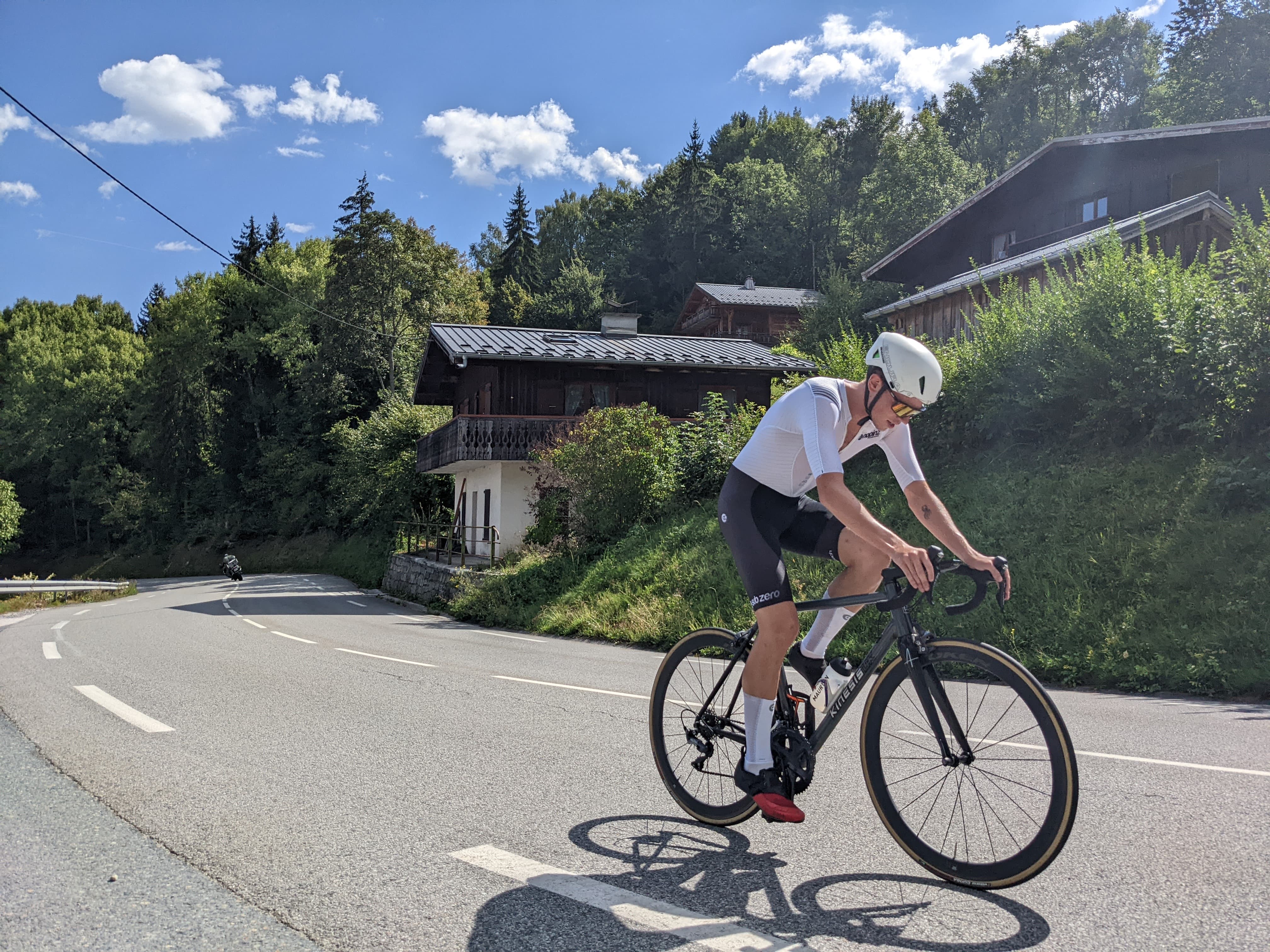
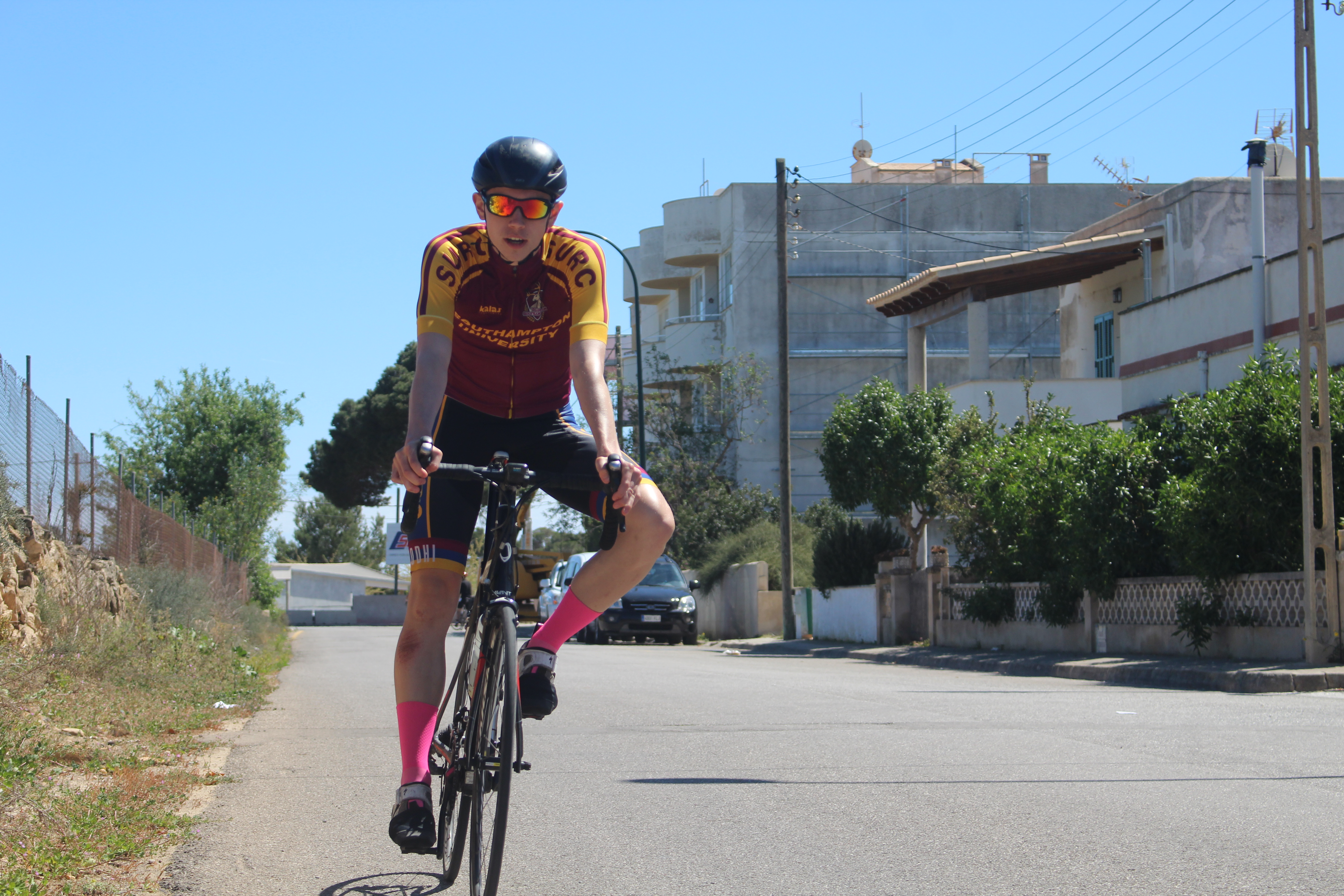
When I first saw the 2022 Tour de France route announcement I was thrilled that the race would be coming through my beautiful little town of Saint Gervais Les Bains - my favourite place on earth.
As things transpired, I couldn’t get out there for the actual day of the race but Thibaut Pinot did a recon of the stage, taking a number of Strava KOMs (a course record on a particular GPS segment, for the uninitiated) on the way.
One of these was a particularly beefy 17km drag from Saint Gervais Les Bains, through to Megève and up the Altiport climb - a climb up which Magnus Cort won and which was also used as a Dauphiné finish in 2020. However, in every bike race they have gone onto the runway. This isn’t something many of us can do as the runway is, naturally, hazardous when open.
Pinot rode up into the car park, the ‘official’ finish of the climb. I suspect he wasn’t going full gas but he did ride up there with a team car and a team-mate - so it was obviously a relatively serious recon mission.
Those that know me will be aware of my occasional self-assurance and typically, I looked at his effort (26kph up a 17km 4% drag) and thought, "I can do that." And so the idea for taking a WorldTour KOM on a cat-one climb (according to Strava’s segment categoriser algorithm anyway) was born.
The segment
Name: Le nérey á cote 2000
Length: 17.34km
Gradient: 3.8%
Excuses in case it didn't come off: I rode 169km the day before with 3,360m of climbing and I am significantly weaker than Pinot
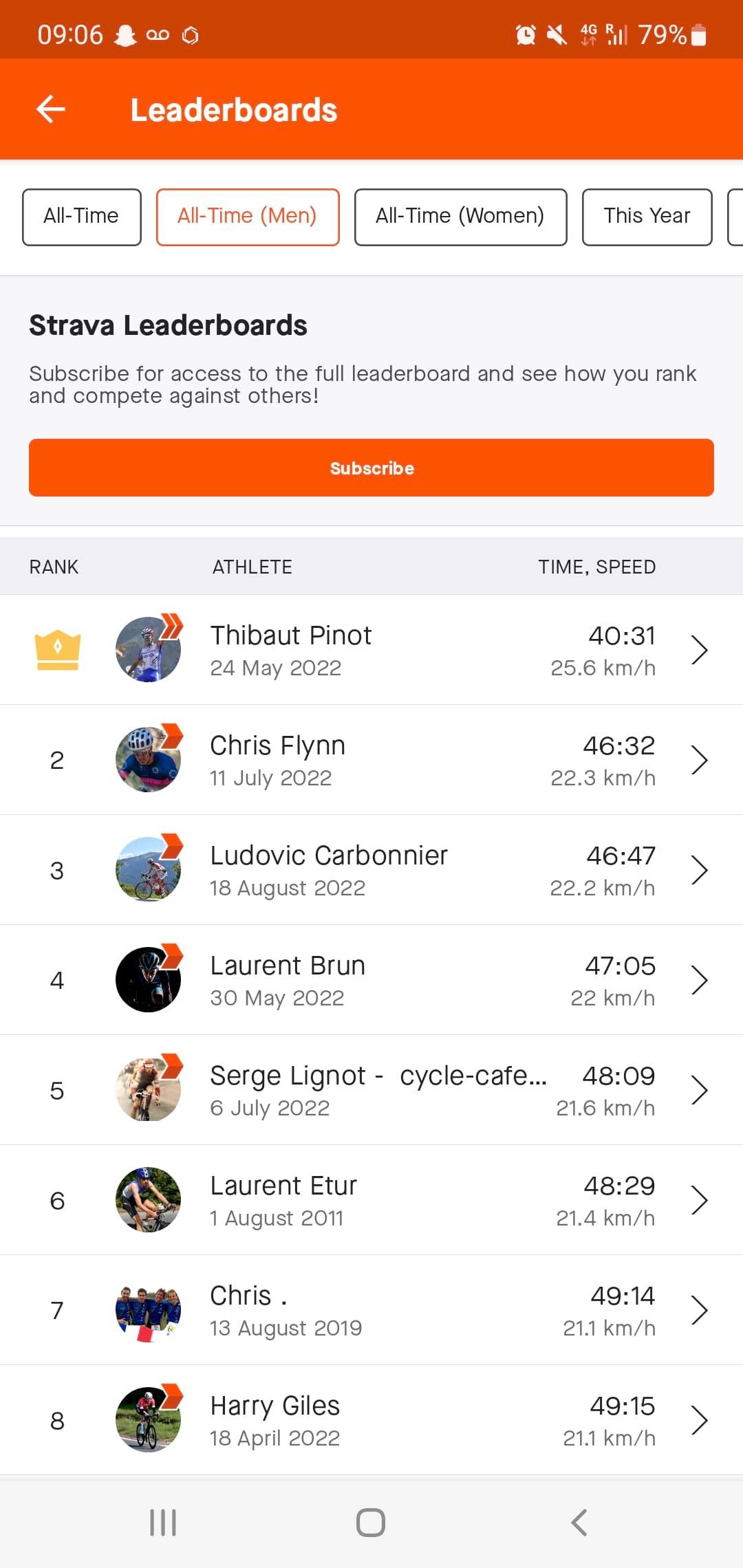
The team
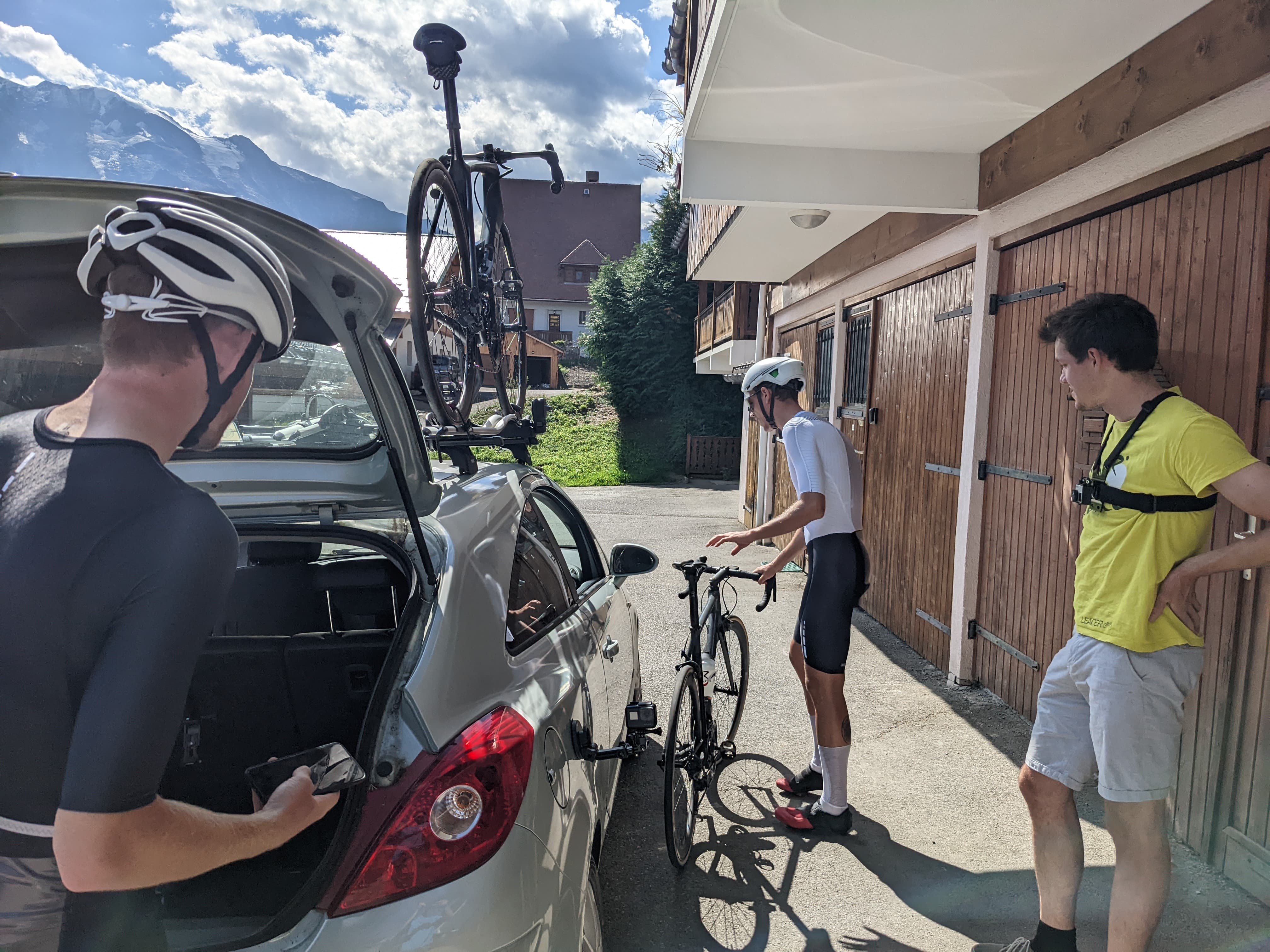
I was not arrogant enough to think this KOM could be taken alone. Pinot had help (and an extra 1.5W/kg) available so I thought I should probably enlist a crack team of experts. Unfortunately, the experts were busy so I ended up with my mates Josh, Harry, Dav and Marcus.
Josh and Dav were on bottles and cameras, Marcus was the driver and Harry paced the flatter sections for me. We avoided using the car for aero assistance as that felt unfair but, luckily for me, Harry provides a similar draft zone to that of a Peugeot Traveller and has a good amount of watts to offer up alongside, making him a perfect team-mate.
We tried to keep the car out of the way, but there were certain times when it provided some draft and it would be remiss to pretend it provided no assistance. We justified this by noting that many Tour de France KOMs are moto assisted - much more blatantly than ours was. To be totally honest, Marcus’ driving is so slow that if we used him to motorpace the effort we’d have struggled to meet the 26.6kph average required anyway.

The tech
A special attempt requires a special bit of kit! As the climb is a very draggy one we decided to focus almost entirely on aerodynamics. Starting with the bike, on the road I ride a Kinesis Aithein with mechanical Shimano Ultegra groupset. Given that the effort has some flat sections and there are faster parts of the climb, we stuck with my usual 11-28 cassette and 53-39 chainrings.
The main modifications I made to my bike was to remove my Fizik Arione R5 and replace it with my time trial saddle (a Fabric Tri Flat Elite) as it made holding an aero position more comfortable and was a little lighter.
The final aerodynamic feature of this bike is that my handlebars are only 36cm wide! This makes tucking myself into an aerodynamic ball a little easier - getting nice and narrow to hide from the wind.
I also adorned myself in aerodynamic clothing. The French Alps in late summer have a reputation for being rather warm so I went armed with some kit to try and deal with this.
I used the road version of the Endura Aeroswitch helmet paired with Endura Gabbro 2 sunglasses. The choice of an aero helmet made sense as the actual speed requirements were high with sections over 40kph. The sunglasses were selected because they look nice. The weight penalty against my other helmet options was only a few grams so we went for the aero option.
Alongside the helmet, for this attempt we used a NoPinz Subzero Flow-suit. This was perfect for the heat as its mix of ‘ultra breathable’ and aerodynamic fabrics meant I was both fast and cool. Paired with NoPinz’s white Flow-socks, our set-up was fast and looked good.
The pacing plan
When you’re trying to bag a KOM, two things are your friend. Firstly, the weather forecast. Attempting this with a block headwind would be completely pointless! Secondly, mathematical modelling. We used Best Bike Split to estimate the watts that we would need and how to distribute them across the climb.
Generally speaking, if you’re riding a climb with varying gradients then riding the steep bits harder and the shallow gradients a little easier is a faster way to do it. This is because air resistance increases exponentially with speed but resistance due to gravity stays approximately the same during the effort (though it does actually decrease a little because of changes in gravitational potential on the climb though this isn’t measurable). This means, when you’re going slower up steeper pitches less of your energy (of which you have a fixed amount over any duration) gets lost to air resistance meaning you can use it to propel yourself upward! The general upshot of this is simple - get aero on the flat bits, go hard on the steep bits.
Those of you that have used Best Bike Split’s race planner will know that it spits out a regimen of intervals for you to follow during your race, time trial, stupid KOM attempt or whatever you’re trying to do. This works well for some people but I prefer a slightly older fashioned approach as having my Wahoo beep at me when I am full gas, busy dribbling and delirious from the effort and altitude is just kind of annoying. Instead, if the gradient was 3% or less I would do 320W; if the gradient was 3-5% I would do 340W and at the turning where it turns into an actual climb I would simply go full gas. For context I am somewhere between 72kg and 74kg but I did not actually have a scale where I was staying. For a shallow drag like this, absolute W/kg are less important anyway.
The KOM required around 330W for 40 minutes, which with a big ride in my legs the day before and the last portion of the climb over 1200m of elevation, was touch and go! I couldn’t afford a bad day.
We had our power plan in place and were ready to start - but as the saying goes… Everyone’s got a plan until they get punched in the face.
The attempt itself
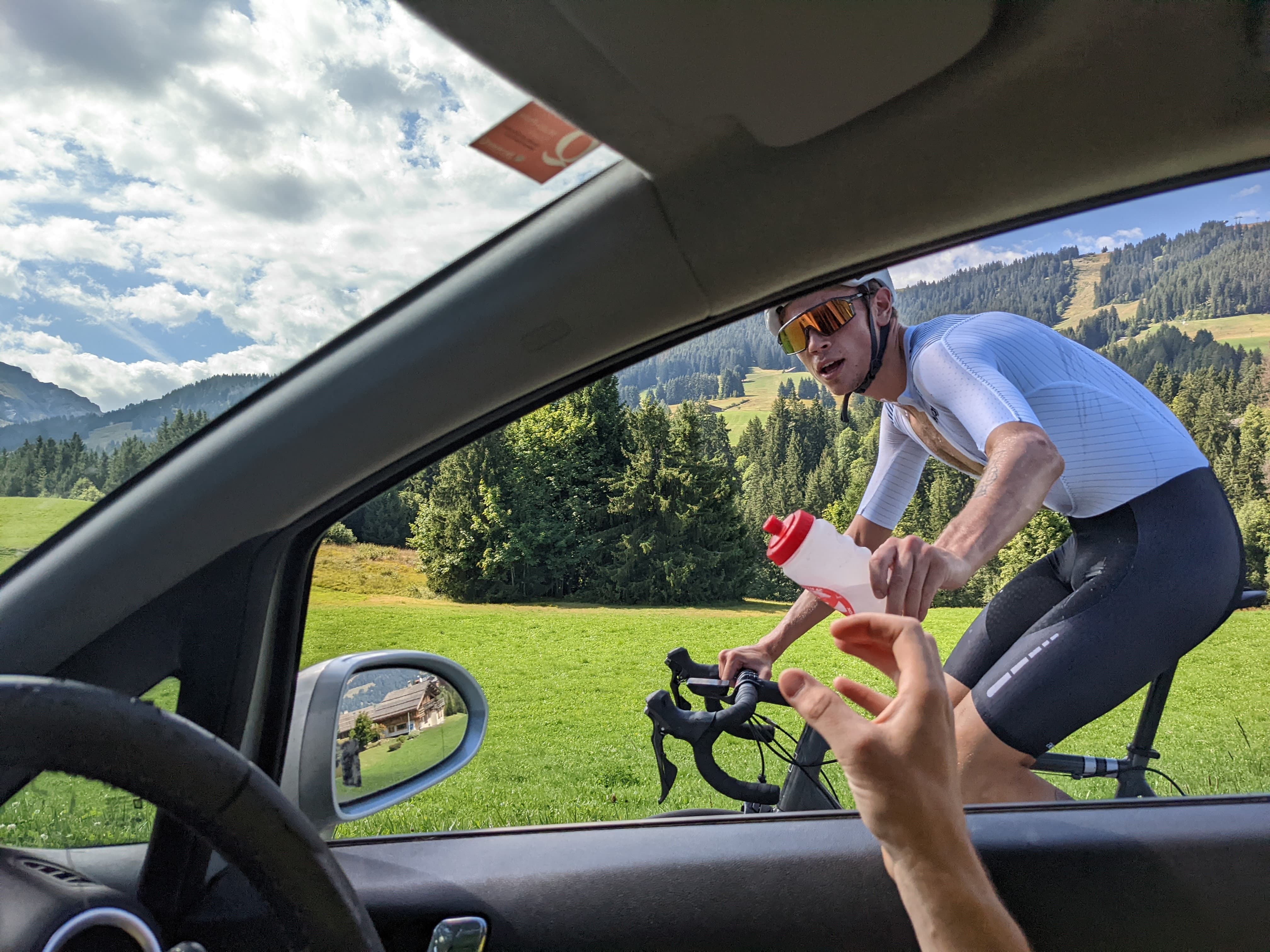
Ok, so no one punched me in the face but the attempt didn’t go perfectly.
We set off for the attempt at 12:01pm, selecting the hottest part of the day for no reason whatsoever. The two minute warm-up was a descent down into town from where we were staying, and then it was time to set off. The segment itself was a stepped climb. The first 8km average 3%, then there’s 1.3km of -1% and after this, the ‘climb proper’ starts. The actual steep portion of the climb is also split into two distinct sectors however. Roughly 4km at 5% to start the climb, a 400m mini false flat descent at -2% with a final kick up to the line at 5% again. Nothing too steep and with no constant change of gradients - the perfect climb for a slightly larger rider (relative to Pinot) like me.
We used Harry to pace the flatter sections and the descent sections within the climb. He did 400W turns while I sat on his wheel. The first portion of the climb, we managed an average speed of 28kph. The slight hiccup was the roadworks which we were not aware of halfway up, though a well-timed green light saved the day here!
Once through the road works it was time for the first flat portion through Megève. Harry jumped out of the car, got on his bike, and got to work. His turns were huge to the point where I didn’t really recover - we just went faster! Through town, along this flat section Harry pulled me along at 42.3kph. Then it was time to negotiate the roundabout and start the actual climb.
By this point we were 20 minutes into the attempt with an average speed of 29.5kph up an average gradient of 3%. Some quick maths from the team car said that I would need to average about 340W for the final 20 minutes of the effort to get the KOM. On top of the 325W averaged up to this point, I wasn’t confident.
Harry peeled off and I launched myself up the first steeper section. The next 10 minutes were quite uncomfortable but I managed 360W. Going through the plateau I was glad to see Harry up the road waiting for me. I got on his wheel and he got back to work. With Harry on the front and a slight descent, I managed two minutes of recovery at 170W - just what I needed before rounding the hairpin which signalled the start of the second ramp.
But trouble was round the corner.
Half an hour into my effort, 1,000m above sea level and feeling like I am breathing through a straw, we get to the hairpin only to see a lorry performing a three-point turn across the entire road. He stops, we squeeze through a small gap, but in the chaos I’ve forgotten to change gear so I hit a 9% ramp in my big ring with my chain half way down the block. Not wanting to risk dropping my chain I get up out of the saddle and pedal as hard as I can for 30 seconds until it flattens out from an almost standing start due to the lorry. A close call.
Now we had 3km to ride and around nine and a half minutes to do it in - up a 5% gradient. I set off as hard as possible and managed 24kph. This meant we had ridden up from Megève at 349W average, 355W normalised at 23.7kph. We took Thibaut’s KOM off him by around 90 seconds in the end.
What the actual point of this exercise is something I’ve thought a lot about since, but the thing that has mostly been on my mind is just how good WorldTour climbers actually are. It took me a full gas effort with a skinsuit and a mate to pace me to 3% faster than a guy who couldn’t win a stage of the Tour this year, in winter kit, at the end of a 200km recon ride not going full gas…
Pinot is a monster, as are all of the men and women riding in the WorldTour. I suspect, if he was so inclined, Thibaut could take the KOM back but I imagine he has bigger things to worry about - like his pet goat.

Thank you for reading 20 articles this month* Join now for unlimited access
Enjoy your first month for just £1 / $1 / €1
*Read 5 free articles per month without a subscription

Join now for unlimited access
Try first month for just £1 / $1 / €1
Get The Leadout Newsletter
The latest race content, interviews, features, reviews and expert buying guides, direct to your inbox!

Tom Epton is a freelance writer and data scientist. Originally training as a scientist after completing his studies in physics he realised that cycling was what he wanted to spend his life thinking about. Now he works with manufacturers, athletes and teams using cutting edge data science methods to find performance gains. Tom writes primarily about sport-science and tech!
-
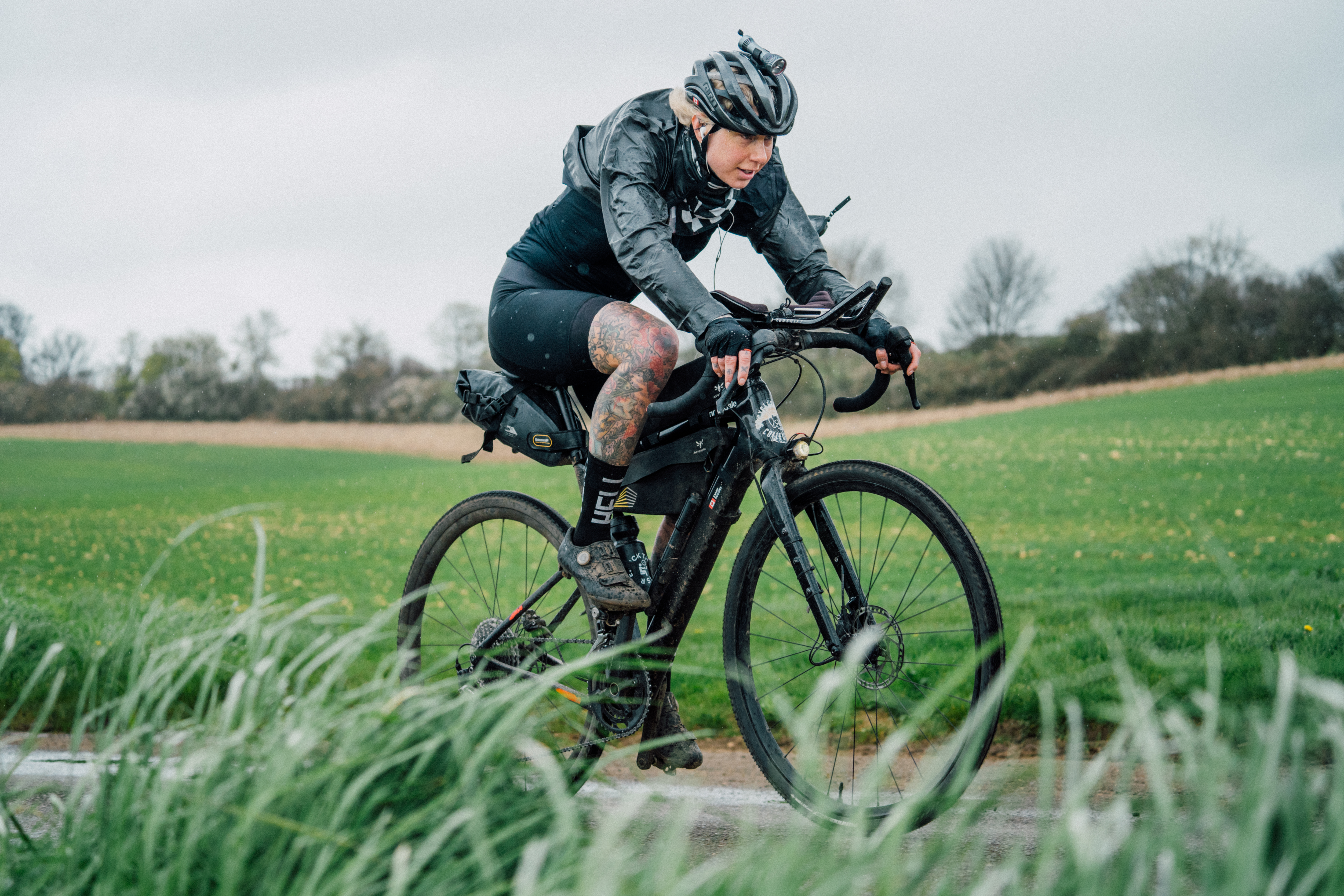 'I've bought four kilos of Haribo just in case' - Meet Dr Sarah Ruggins, who has gone from paralysis to aiming for the LEJOGLE record
'I've bought four kilos of Haribo just in case' - Meet Dr Sarah Ruggins, who has gone from paralysis to aiming for the LEJOGLE recordCanadian is aiming to take the overall record for Lands End to John O' Groats to Lands End, which currently stands at five days, 18 hours
By Adam Becket
-
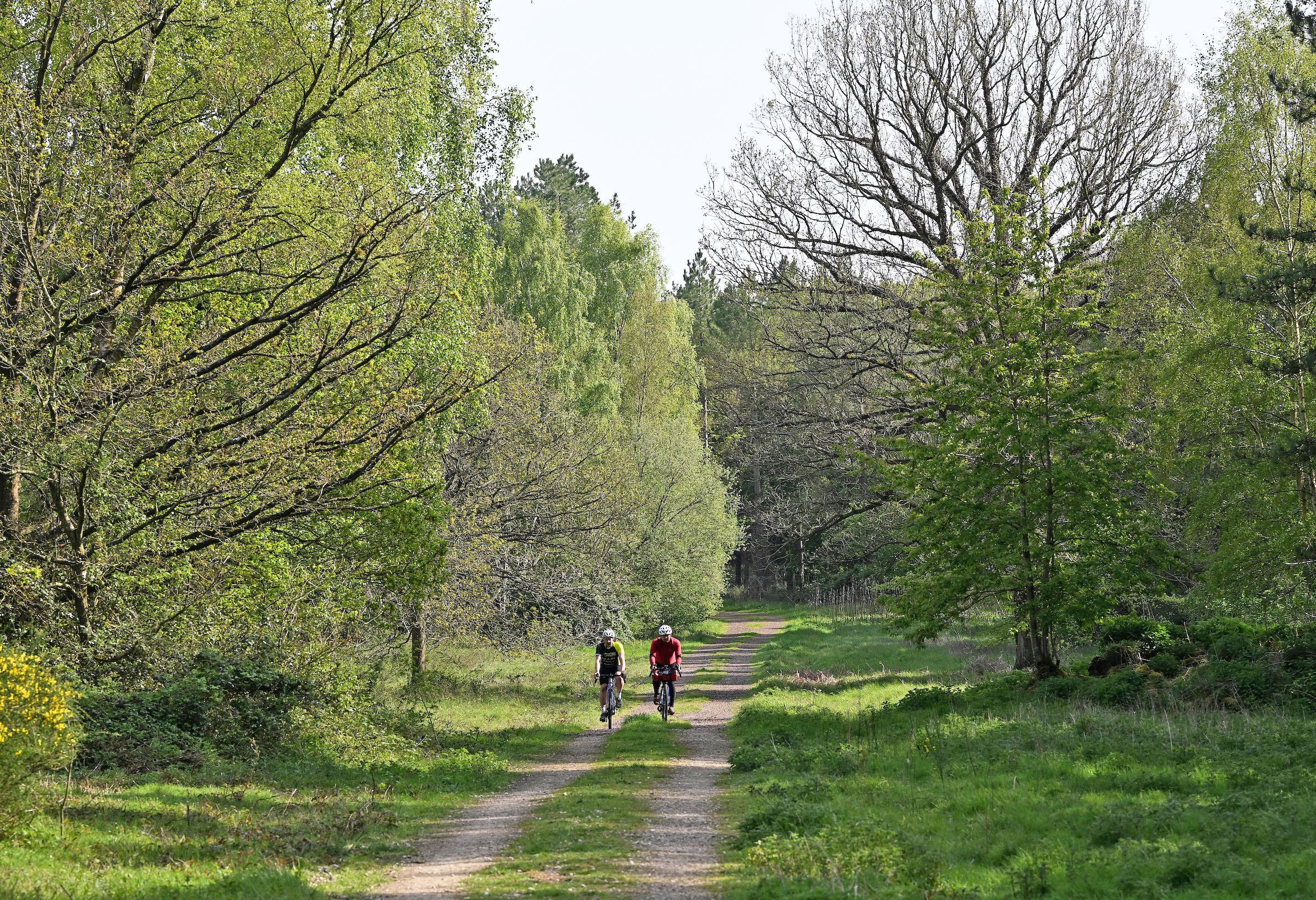 The sun's out and so am I: why there's no shame in being a fair-weather bike rider
The sun's out and so am I: why there's no shame in being a fair-weather bike riderLet's be honest, rain and riding bikes don't mix well – there's nothing wrong with waiting for the sun
By James Shrubsall